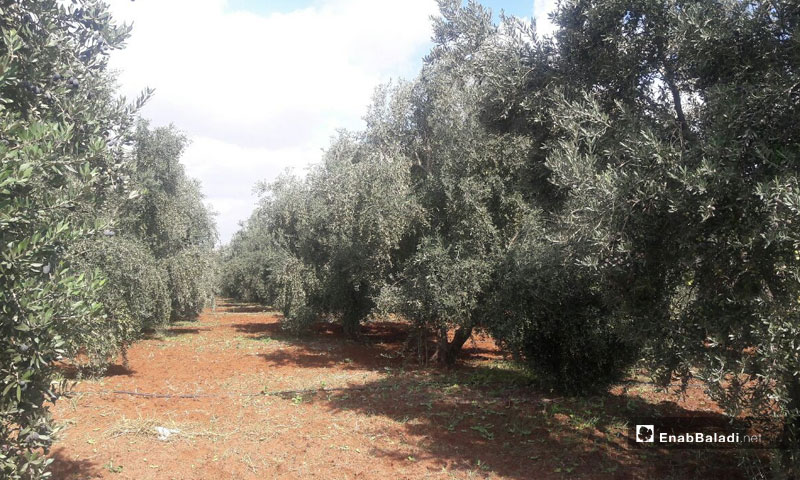The olive harvest in the province of Daraa was expected to see large increases this year after the cessation of the Syrian regime’s shelling and the reduction of military operations in the region, which damaged half of its olive groves and destroyed dozens of olive presses in past years. However, the year’s olive harvest turned out below expectations as a result of successive heatwaves.
The unusual heatwaves that hit Daraa affected the blooming of olive tress and was the main reason behind the poor harvest, which had nonetheless increased by just over a third in comparison to harvests during the past years of the Syrian conflict.
In most parts of Daraa, the olive harvest gradually improved despite July’s heatwaves almost halved the olive production. This year’s harvest is estimated to reach 26,000 tons from 23,000 tons last year.
An agricultural engineer, speaking to Enab Baladi on condition of anonymity, estimated that “each 80 kilograms of olive produce around 16-kilograms of oil.”
The head of the olive department at the directorate of agriculture and agrarian reform, Hanan al-Khayat estimated that the number of olive trees for this reached around 3 million fruit-bearing olive trees. This almost half the number, 6 million trees, in 2011, according to the Syrian News Channel.
Al-Khayat predicted that Daraa’s production will reach up to 26,000 tons of olive fruits and 3,000 tons of olive oil.
Olive oil presses
Abu Mohammad al-Rifai, a farmer from the western countryside of Daraa, promptly transported his olives harvest to the pressing facility when the executive office of the Daraa provincial council announced the opening of the oil processing facilities on 13 October. Abu Mohammad wanted to avoid the “crisis of the olive oil presses,” as he described it to Enab Baladi. In reference to the expected congestion at the presses in November, and the impediment that storms and the cold temperature are expected to cause this winter.
While this year’s olive production has not been as predictable, Abu Mohammad hopes for a good revenue from the oil, considering the fixed price set by the executive office for pressing one kilogram of olive fruits “reasonable,” compared to the expected price of one oil tank (around 25,000 SYP). Pressing more than 500 kg of olives costs 17 SYP per kg while less than 500 kg costs 20 SYP.
Abu Amjad, a farmer from the village of Atman, returned to his olive groves after a four- year displacement. He found his olives in a “bad” shape due to the lack of care and being burned and damaged during the clashes and shelling carried out in the beginning of 2018.
However, Abu Amjad, who asked not to use his full name for security reasons, told Enab Baladi that he is doing his best to fix his olive groves in order to raise the production this year.
Abd al-Wahid al-Awad, director of industry in Daraa, said that Daraa includes 42 oil presses, 20 of which became operable again this year, in an interview with the state-run news channel.

